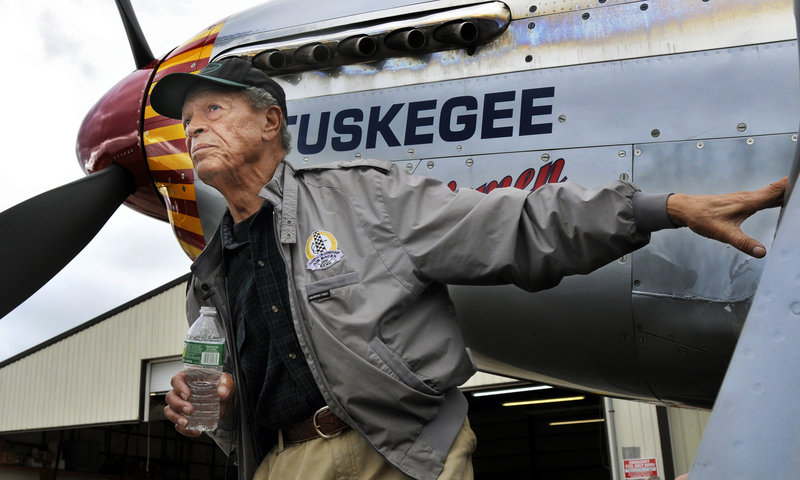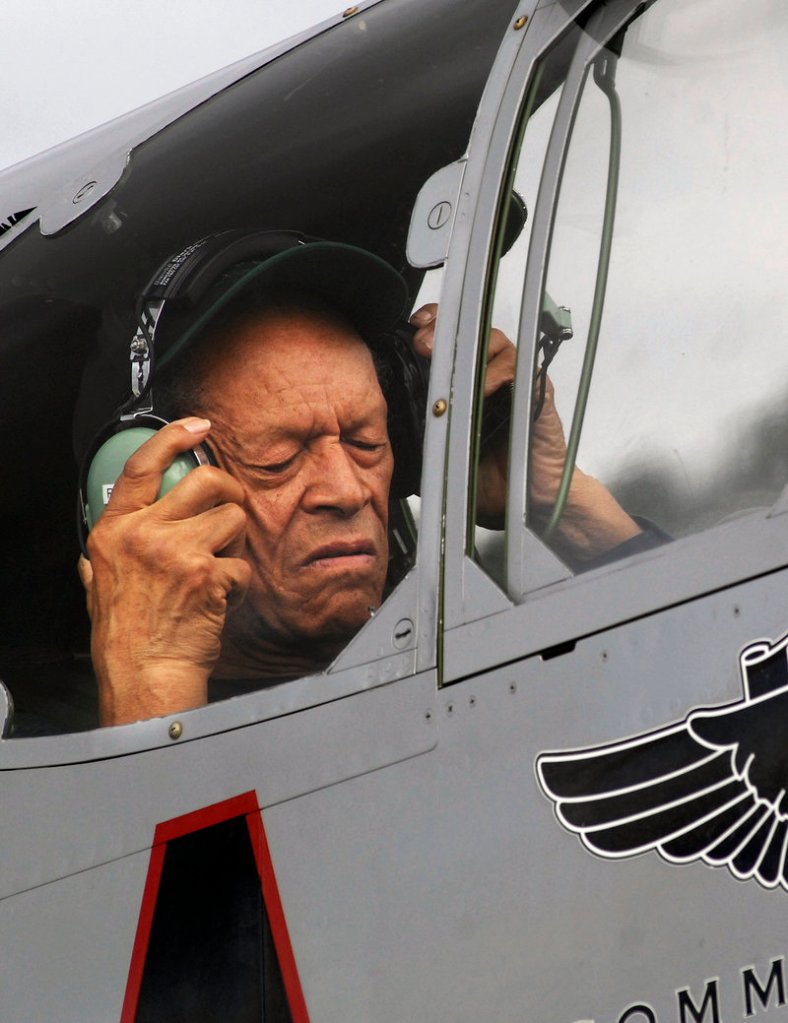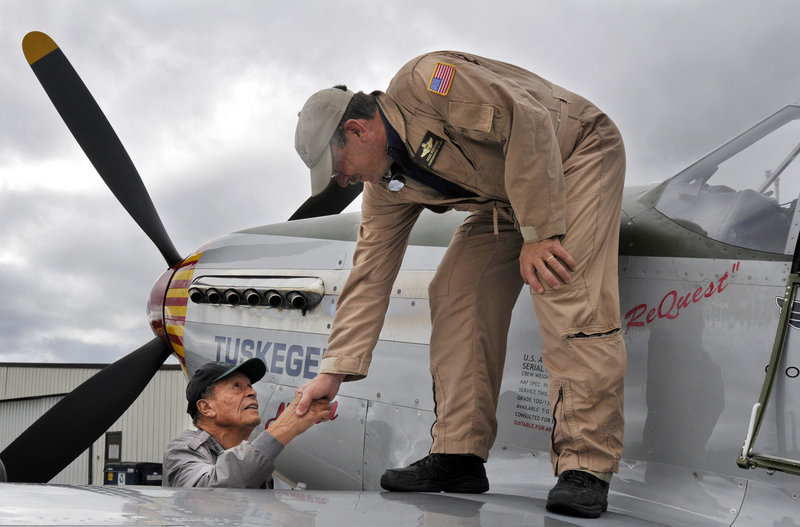BIDDEFORD – It wasn’t the first time Jim Sheppard flew in a Red Tail P-51C Mustang.
The 87-year-old sat tucked into the second seat of the World War II aircraft named aptly for the crimson coloring on its tail. His eyes glimmered beneath the brim of his baseball cap as pilot Alan Miller fired up the engine.
As the two slowly taxied away from Biddeford Municipal Airport, Sheppard saluted the small crowd that had gathered Saturday afternoon.
The last time he took off in a P-51C was 66 years ago at the end of World War II — the end of his service as a Tuskegee Airman in the 332nd Fighter Group, the first all-black unit in what was then the U.S. Army Air Corps.
Chris Griffith planned the afternoon flight as a surprise for Sheppard, who lives in South Portland.
Griffith, president of the nonprofit group Texas Flying Legends, met Sheppard last month at the airport’s open house. When Griffith learned of Sheppard’s history as a Tuskegee Airman, he arranged for the P-51C to come to Biddeford.
The World War II aircraft, now part of the Commemorative Air Force Red Tail Squadron, travels across the country to teach the history of the Tuskegee Airmen and to inspire young people’s interest in aviation.
As the P-51C circled the airport Saturday, Griffith said to Sheppard: “They’re coming here for you. This is your Red Tail.”
Sheppard talks humbly of his days as a crew chief during the war, working on P-51C Mustangs, P-47 Thunderbolts, P-30s and Curtiss P-40s that his squadron flew.
After the war, Sheppard struggled to find work in the aviation field because of persistent discrimination. Five years later, he finally landed a job servicing Constellation luxury airliners at New York City’s Idlewild Airport, now named JFK International Airport.
The Federal Aviation Administration hired him after that as a safety inspector and he came to Maine in 1972.
A regular at air shows, Sheppard saw the P-51C last year at the Wings Over Houston show, but was surprised to see it in Biddeford.
“How come I didn’t know it was coming here?” Sheppard said as the plane landed and taxied down the runway toward the small crowd.
As the loud engine shut off, Sheppard looked at those around him and said, “Now, can you imagine seeing 48 of those taking off at one time?”
Sheppard actually remembers launching 64 planes in a matter of minutes for a mission during World War II. He said 32 planes lined up facing each other at each end of a mile-long runway. The first 32 planes took off and as soon as they were airborne, the next 32 took off.
Knowing he would see Griffith on Saturday, Sheppard had with him a gun camera. He showed Griffith exactly where that camera sat, nestled in the left wing of the P-51C.
“The camera was used to prove a victory,” Sheppard said.
The camera started as soon as the pilot pulled the trigger to fire four .50-caliber machine guns, he said, recording until 10 seconds after the last of 300 rounds in each gun was fired.
It’s a piece of Sheppard’s past that he carries with him.
Now he’ll have the memory of flying over the coastline of Maine, just as he once flew over the countryside of Europe.
“Boy,” Sheppard said before he climbed in the plane, “this is a real picnic for me.”
Staff Writer Emma Bouthillette can be contacted at 791-6325 or at:
ebouthillette@pressherald.com
Send questions/comments to the editors.





Success. Please wait for the page to reload. If the page does not reload within 5 seconds, please refresh the page.
Enter your email and password to access comments.
Hi, to comment on stories you must . This profile is in addition to your subscription and website login.
Already have a commenting profile? .
Invalid username/password.
Please check your email to confirm and complete your registration.
Only subscribers are eligible to post comments. Please subscribe or login first for digital access. Here’s why.
Use the form below to reset your password. When you've submitted your account email, we will send an email with a reset code.